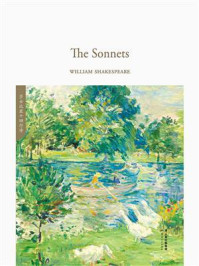




本文是一篇说明文,主要介绍了中国古代伟大的工程——京杭大运河的历史、作用、发展和现状。
The Grand Canal, about 1,764 kilometers long, is the longest and greatest man-made water-way in ancient China, far surpassing the next two of the world:the Suez and Panama Canals. It was placed on the UNESCO’s World Heritage List in 2014. Running from Hangzhou, Zhejiang Province in the south to Beijing in the north and connecting different river systems, Grand Canal contributed greatly to ensuring that the Chinese primary economy thrived in past dynasties. Now more than 2,000 years old, some parts of the canal are still in use.
The Grand Canal we see today was built section by section in different areas and dynasties before it was linked together by the Sui Dynasty (581—618). In 604 AD, Emperor Yangdi of the Sui Dynasty toured Luoyang. The following year, he moved the capital to Luoyang and ordered a large-scale expansion of the canal. Due to the primitive building techniques, it took over six years to complete the project. Approximately half the peasant builders (about 3,000,000)died of hard labor and hunger before it was finished. This project was thought to have been a waste of manpower and money, which resulted in the downfall of the Sui Dynasty.
As a major transportation hub, the Grand Canal connected the Yangtze, Yellow, Huaihe, Haihe, and Qiantang Rivers and flowed through Beijing, Tianjin, Hebei, Shandong, Jiangsu and Zhejiang. The Grand Canal, which joined the river systems from different directions, provided a good way to transport foods and goods from south to north. Just as importantly, it greatly strengthened economic and cultural connections between north and south.
Boating on the old Canal is one of the best ways to get a panoramic view of the landscape of typical river towns in southern China, which include ancient dwellings, stone bridges of traditional designs and historical relics. Experiencing some of the local customs offers much delight to travelers. Tourists also have an opportunity to enjoy good food while appreciating the surrounding scenery.
大运河长约1764公里,是中国古代最长、最大的人造水道,远远超过了世界上另两大运河:苏伊士运河和巴拿马运河。2014年,它被列入联合国教科文组织《世界遗产名录》。大运河从南方的浙江杭州向北延伸到北京,连接着不同的河系,大大保证了中国古代经济在历代的兴盛。大运河现在已有2000多年的历史,一些部分仍在使用。
我们今天看到的大运河是在隋朝(581年—618年)连接在一起的,在此之前由不同地区、不同朝代分段修建。公元604年,隋炀帝游览了洛阳。第二年,他将首都迁往洛阳,并下令大规模扩建运河。由于原始的建筑技术,这个工程花了六年多的时间才完成。大约一半的民工(约3000000)在工程未完成前就因为苦役和饥饿而死亡。这个工程被认为是人力和财力的浪费,这导致了隋朝的灭亡。
大运河是连接长江、黄河、淮河、海河、钱塘江的重要交通枢纽,流经北京、天津、河北、山东、江苏和浙江。大运河从不同方向连接了河流系统,为食物和货物从南向北运输提供了良好的途径。同样重要的是,它大大加强了南北之间的经济文化联系。
在古运河上泛舟是欣赏中国南方典型水乡景观的最佳途径之一,包括古民居、传统石桥和历史文物。体验一些当地的风俗会给游客带来很多乐趣。游客也有机会品尝美食,欣赏周围的风景。
contribute v. 有助于,有利于
ensure vt. 确保,保证
expansion n. 扩充,扩建
approximately adv. 大约
strengthen vt. 增强,加强
Due to the primitive building techniques, it took over six years to complete the project.
由于原始的建筑技术,这个工程花了六年多的时间才完成。
Tourists also have an opportunity to enjoy good food while appreciating the surrounding scenery.
游客也有机会欣赏美食,欣赏周围的风景。


